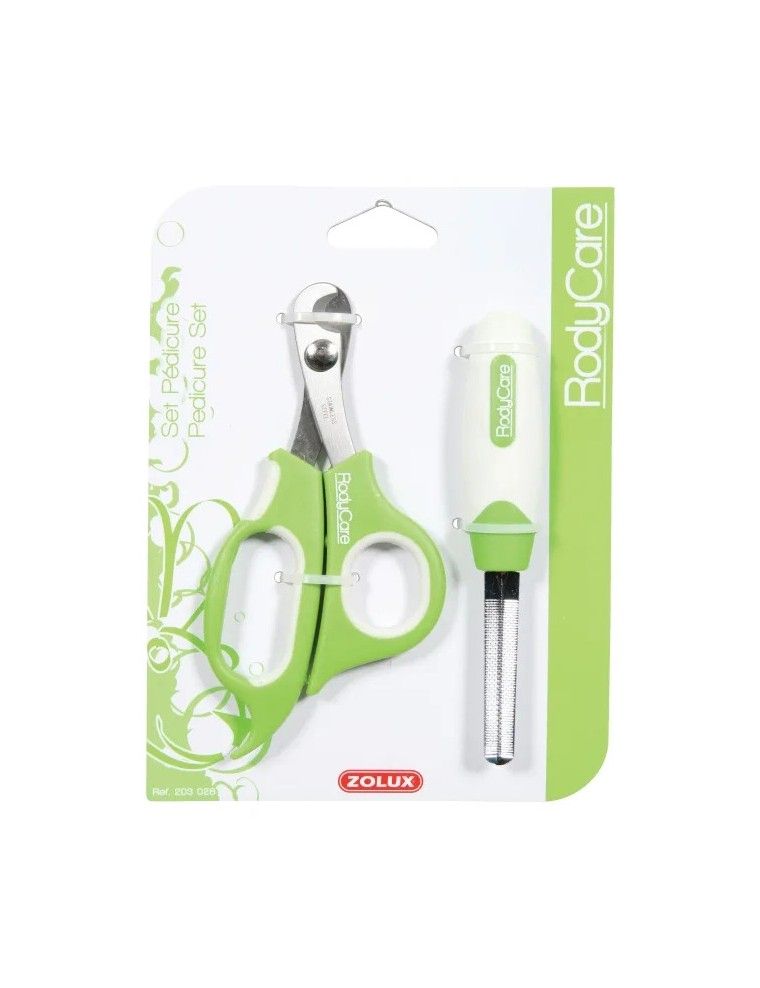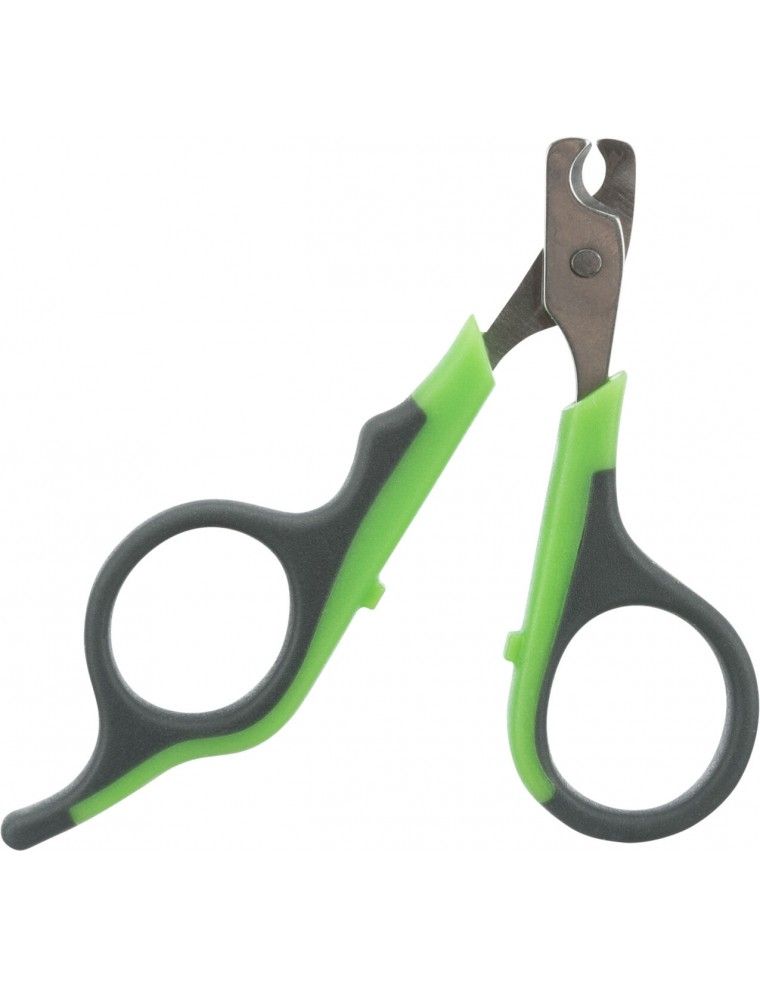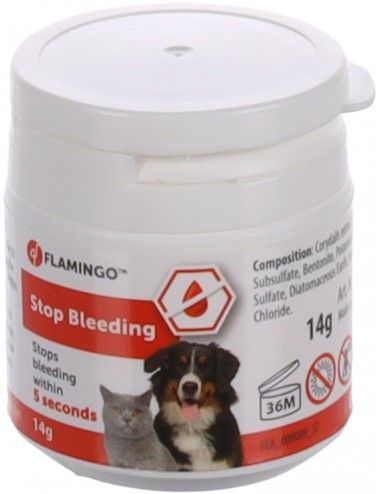- 2 in stock
Claws Guinea pig/Guinea pig
Nail Trimmer for Guinea Pig: Comfort and Safety Made Simple
The claws of your adorable guinea pig deserve your full attention to ensure their comfort and safety. At Le Petit Rongeur, we understand the importance of maintaining your companion's claws at the correct length, and that's why we offer you a selection of quality nail clippers, including renowned brands such as Trixie and Zolux .
Why Trim Your Guinea Pig's Nails?
You may be wondering why it is essential to trim your guinea pig's nails. Well, the answer is simple: your pet's comfort and safety are at stake. Nails that are too long can cause a variety of problems, including inconvenience for your little companion and an increased risk of injury.
The frequency of nail trimming varies from guinea pig to guinea pig, depending on the rate of their growth. In general, we recommend checking and trimming the nails about once a month. This may seem like a common occurrence, but it's the best solution in the long run. If the claws are left too long, the quick, that sensitive area containing nerves and blood vessels, also lengthens. It is therefore essential not to cut the quick, otherwise it will cause unnecessary pain and bleeding. The snitch limits the amount of claw you can cut, so it's best to act preventatively.
If you wait too long to trim your guinea pig's nails, the quick will continue to grow, making the task more difficult. However, you can encourage its regression by trimming the claws gradually, but this will take time. In conclusion, it is better to be safe than sorry by keeping your pet's nails at the correct length.
Tips for Stress-Free Nail Trimming
We understand that clipping your guinea pig's nails can be stressful for both you and them. Here are some tips to make this task easier:
- If your pet seems stressed while cutting, it's best to take a break and try again later when everyone is calmer.
- Establish a routine by trimming your pet's nails regularly. The more you do it, the more confident you will feel, and your companion will gradually get used to the procedure.
- If you are new to nail trimming, don't worry. You can ask your veterinarian for a demonstration. They will be able to show you how to hold your guinea pig safely and give you practical advice on cutting technique.
At Le Petit Rongeur, we are concerned about the well-being of your guinea pig. Our selection of quality nail clippers and our useful advice will allow you to take care of your claws with ease. Make sure your pet feels comfortable and safe while maintaining their health.
Claws
Nail Trimmer for Guinea Pig: Comfort and Safety Made Simple
The claws of your adorable guinea pig deserve your full attention to ensure their comfort and safety. At Le Petit Rongeur, we understand the importance of maintaining your companion's claws at the correct length, and that's why we offer you a selection of quality nail clippers, including renowned brands such as Trixie and Zolux .
Why Trim Your Guinea Pig's Nails?
You may be wondering why it is essential to trim your guinea pig's nails. Well, the answer is simple: your pet's comfort and safety are at stake. Nails that are too long can cause a variety of problems, including inconvenience for your little companion and an increased risk of injury.
The frequency of nail trimming varies from guinea pig to guinea pig, depending on the rate of their growth. In general, we recommend checking and trimming the nails about once a month. This may seem like a common occurrence, but it's the best solution in the long run. If the claws are left too long, the quick, that sensitive area containing nerves and blood vessels, also lengthens. It is therefore essential not to cut the quick, otherwise it will cause unnecessary pain and bleeding. The snitch limits the amount of claw you can cut, so it's best to act preventatively.
If you wait too long to trim your guinea pig's nails, the quick will continue to grow, making the task more difficult. However, you can encourage its regression by trimming the claws gradually, but this will take time. In conclusion, it is better to be safe than sorry by keeping your pet's nails at the correct length.
Tips for Stress-Free Nail Trimming
We understand that clipping your guinea pig's nails can be stressful for both you and them. Here are some tips to make this task easier:
- If your pet seems stressed while cutting, it's best to take a break and try again later when everyone is calmer.
- Establish a routine by trimming your pet's nails regularly. The more you do it, the more confident you will feel, and your companion will gradually get used to the procedure.
- If you are new to nail trimming, don't worry. You can ask your veterinarian for a demonstration. They will be able to show you how to hold your guinea pig safely and give you practical advice on cutting technique.
At Le Petit Rongeur, we are concerned about the well-being of your guinea pig. Our selection of quality nail clippers and our useful advice will allow you to take care of your claws with ease. Make sure your pet feels comfortable and safe while maintaining their health.
- 6 in stock
- 2 in stock
Questions / Réponses
Les griffes des cochons d'Inde continuent de croître tout au long de leur vie. Sans coupe régulière, elles peuvent devenir trop longues, se courber et causer de l'inconfort, voire des blessures en marchant ou se coincer dans la litière.
La fréquence varie selon l'usure naturelle des griffes, mais en général, elles doivent être vérifiées et potentiellement coupées toutes les 4 à 6 semaines pour prévenir une croissance excessive.
Utilisez un coupe-griffes spécialement conçu pour les petits animaux ou un coupe-griffes pour bébé. Ces outils permettent une coupe précise et sont de taille appropriée pour les petites griffes des cochons d'Inde.
La veine, appelée "le quick", est visible dans les griffes claires comme une ligne rose. Coupez juste en dessous de cette ligne. Pour les griffes foncées, où le quick n'est pas visible, coupez par petites étapes pour éviter de le toucher.
Si vous coupez le quick et que cela saigne, appliquez un styptique en poudre ou de la farine pour arrêter le saignement. Gardez votre cochon d'Inde calme et surveillez la griffe pour éviter l'infection.
Oui, mais si vous êtes novice, il peut être utile d'avoir une autre personne pour tenir doucement le cochon d'Inde pendant que vous coupez les griffes. Vous pouvez aussi demander une démonstration à votre vétérinaire avant de le faire vous-même.
Habituez votre cochon d'Inde au contact et à la manipulation de ses pattes dès son jeune âge. Commencez par des sessions courtes et récompensez-le avec des friandises pour créer une association positive.
Bien que les soins des griffes restent constants toute l'année, vérifiez plus souvent en hiver si votre cochon d'Inde passe moins de temps à l'extérieur, ce qui pourrait réduire l'usure naturelle de ses griffes.
Oui, inclure dans la cage des surfaces légèrement rugueuses, comme des tuiles ou des pierres plates, peut aider à l'usure naturelle des griffes, mais cela ne remplace pas la nécessité de les couper régulièrement.


